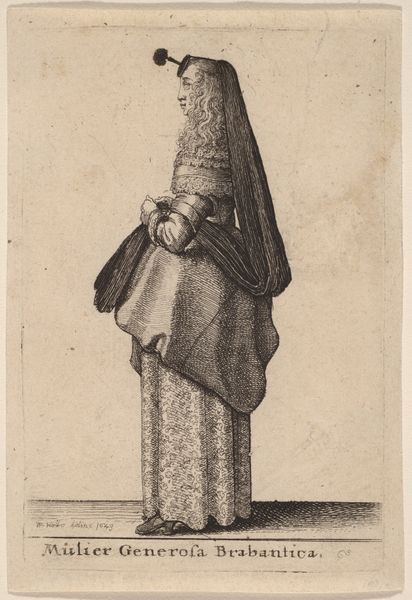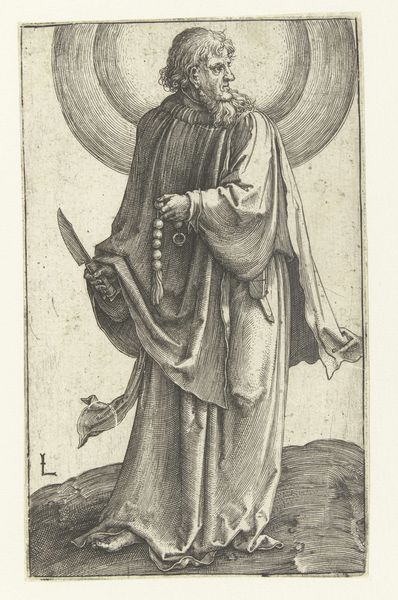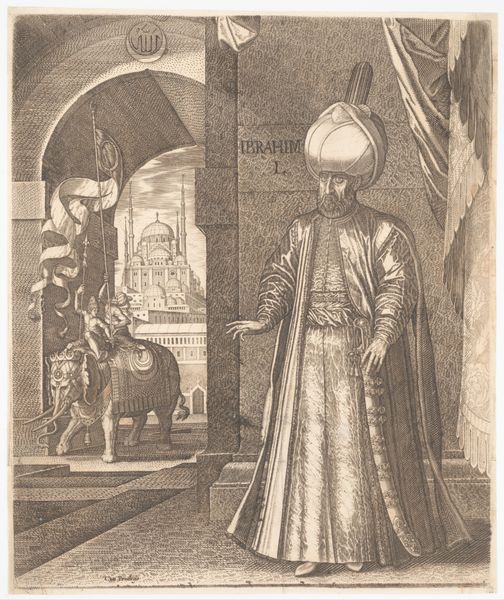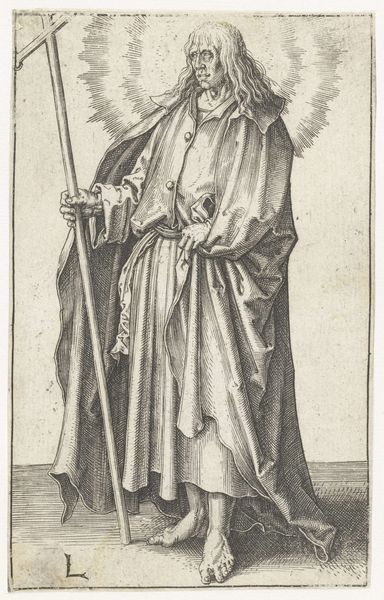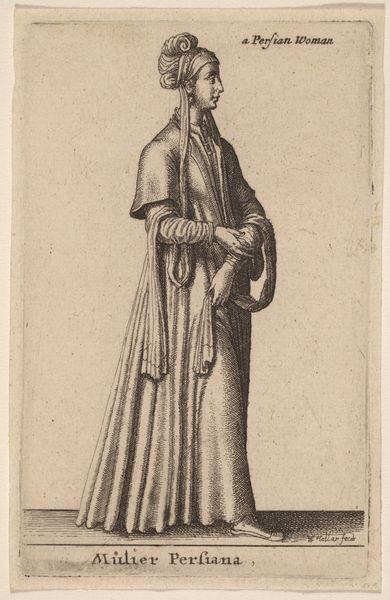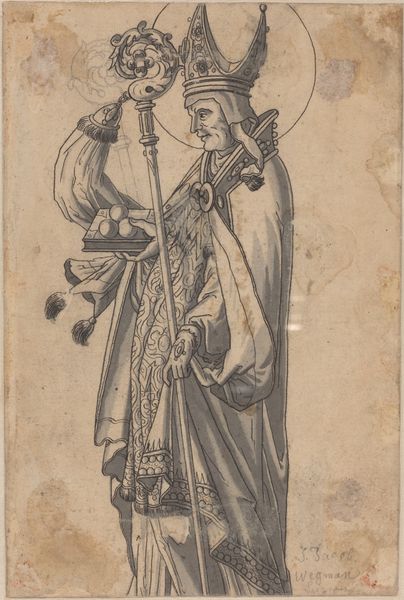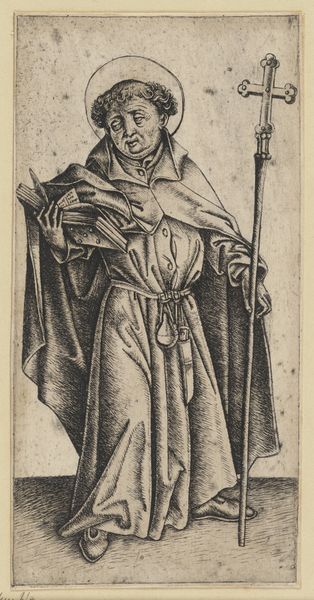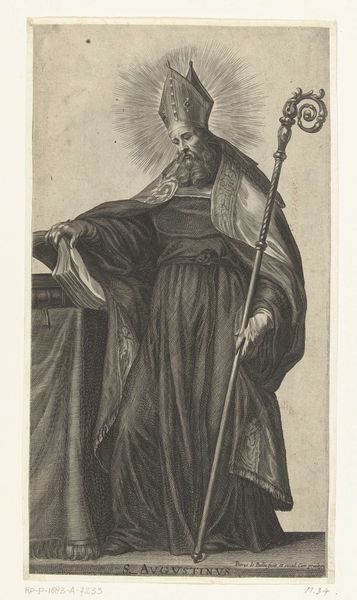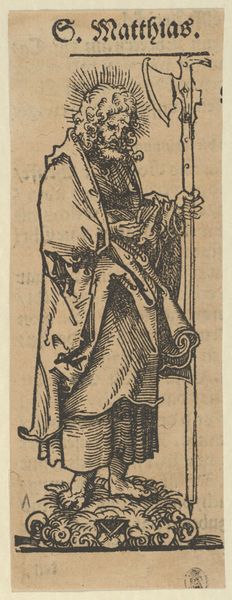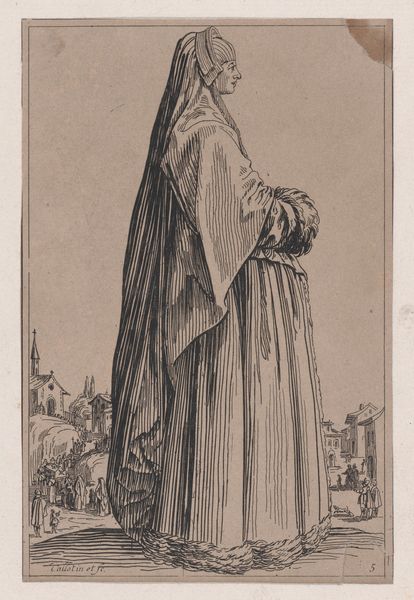
Portrait of Ismail, The Persian Ambassador of the Persian Shah Tahmasp I, Standing 1573
0:00
0:00
drawing, print, paper, engraving
#
portrait
#
drawing
# print
#
figuration
#
paper
#
11_renaissance
#
islamic-art
#
history-painting
#
engraving
Dimensions: 395 × 265 mm (image/plate); 408 × 310 mm (sheet)
Copyright: Public Domain
Curator: This print, rendered in engraving, is titled "Portrait of Ismail, The Persian Ambassador of the Persian Shah Tahmasp I, Standing," crafted in 1573 by Melchior Lorichs. Editor: There’s an immediate formality here. The sheer verticality of the composition—the obelisk, the architectural background—forces the eye upward, emphasizing the ambassador’s towering headdress. The texture, created solely by lines, almost mimics woven textiles. Curator: The choice of engraving, and its resultant linear precision, reinforces this sense of calculated presentation. Look at how the artist uses cross-hatching to articulate the play of light on Ismail’s robes, creating both volume and rich detail. The geometric backdrop further accentuates the ambassador's dignified, static pose. Editor: Indeed, the very rigidity speaks to its historical context. As an ambassadorial portrait, it’s not simply about individual likeness but about representing power, projecting an image of Persian authority to a European audience. It’s about cultural performance, the display of wealth through elaborate garments and symbolic objects. What did Lorichs hope to achieve by depicting him so grandly? Curator: The sharp, unwavering lines communicate control, essential to Lorich's engagement with representing political and religious power in the ambassadorial figure. The medium's capacity for detail creates a clear image that translates well, and ensures clarity over subjective or emotive interpretations. Editor: Perhaps. However, those same details invite a deeper reading. Consider the setting—an urban landscape with an obelisk, perhaps meant to evoke the ancient world, linking Persian authority with historical precedents. This is not merely a portrait; it's a statement about a nation's place in history, carefully curated for an external gaze. I find it all quite staged. Curator: But within this stage, Lorichs presents a sophisticated visual strategy. Notice the geometric relationships in his dress—each conveys deliberate, careful presentation, devoid of overt gesture. He positions the subject as stable and composed, which is what matters in such formal portraiture. Editor: Which invites reflection about cultural representation. Who consumes this image, and what meanings are projected onto it by varied audiences through the centuries? The image acts as an invitation, prompting us to interrogate art's ability to frame how societies regard each other and how global exchanges once took place. Curator: It presents to its audience a system to understand form and visual organization with little or no symbolic value in its historical and artistic background, while creating its own discourse with these features. Editor: Ultimately, this print reveals how visual languages shape political relationships, urging us to consider our place as spectators.
Comments
No comments
Be the first to comment and join the conversation on the ultimate creative platform.


